Very helpful information! Hopefully no animal will be severely injured, but its good to know just in case
How You Can Save 7 Types of Injured Animals: Crucial Steps
Whether you should try to help an injured or orphaned animal is a tricky question. The rule of thumb is to contact an animal rescue center and ask for their opinion. There are some instances when you shouldn’t intervene, and this is often the case with wild animals, like adult raccoons. But sometimes, animals do need our help,
We at Bright Side would like you to be prepared for all of the possible scenarios you might encounter in
1. Bird
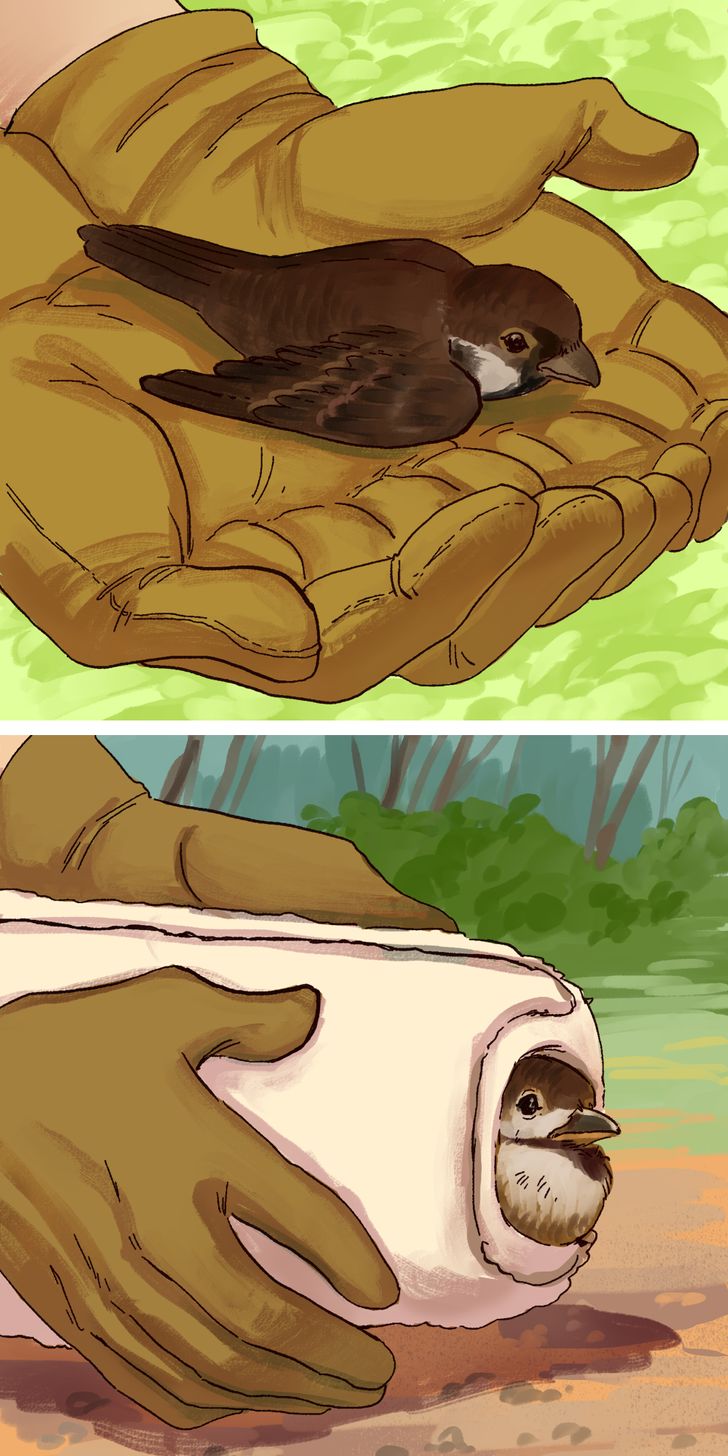
Before you try to help a bird that you think needs your help, make sure that they really are injured and can’t fly away on their own. Sometimes people pick up birds that they think are orphaned, when in fact their mother is nearby or will come back soon, and end up doing more harm than good. Then follow these steps:
- Prepare a cardboard box or a paper bag just big enough for the bird to fit in. Make air holes in it and put some cloth on the bottom, like a towel or a T-shirt.
- Make sure to protect yourself. Cover your hands with something, for example, put on gloves if you have them. This will protect your hands from the bird’s beak and claws, as well as parasites and diseases.
- Cover the bird with something like a towel, pick it up with both hands, place it in a box, and close the lid. After about 15 minutes, you can open the lid and check to see if the bird has recovered from the shock and can fly away.
- If it doesn’t, or if you noticed right away that it’s been badly injured, contact a rehabilitation facility.
2. Dolphin
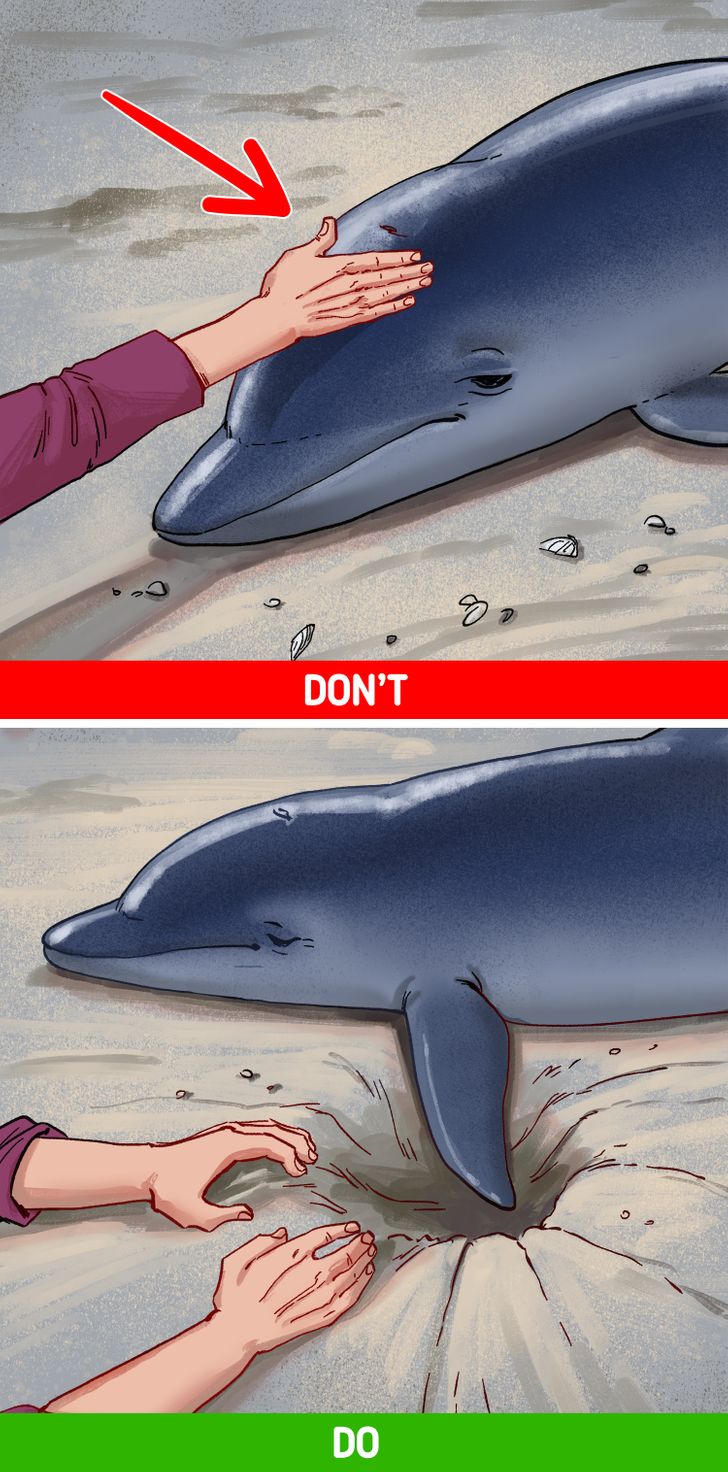
If you ever come across a stranded dolphin, there’re things you can do to help them survive, because they won’t be able to do that on their own. While you wait for professional responders, you can:
- Make sure the dolphin stays cool and wet. You can pour water over their skin, but avoid the blowhole, otherwise they won’t be able to breathe.
- You can also put a T-shirt or a towel soaked in cool water. Apart from the blowhole, it’s also important to make sure you don’t cover other areas, which include the dorsal fin, pectoral fins, and tail flukes.
- Dolphins aren’t used to being on flat land. So you can dig a small hole under each pectoral fin, and also under the chest and fill it with water. This will help relieve pressure but also support their chest.
- Try not to move them in order to avoid further injury and be aware that a stranded dolphin could be ill and have an infection. Avoid unnecessary touching, because it could put more stress on the dolphin and they could hurt you.
3. Dog
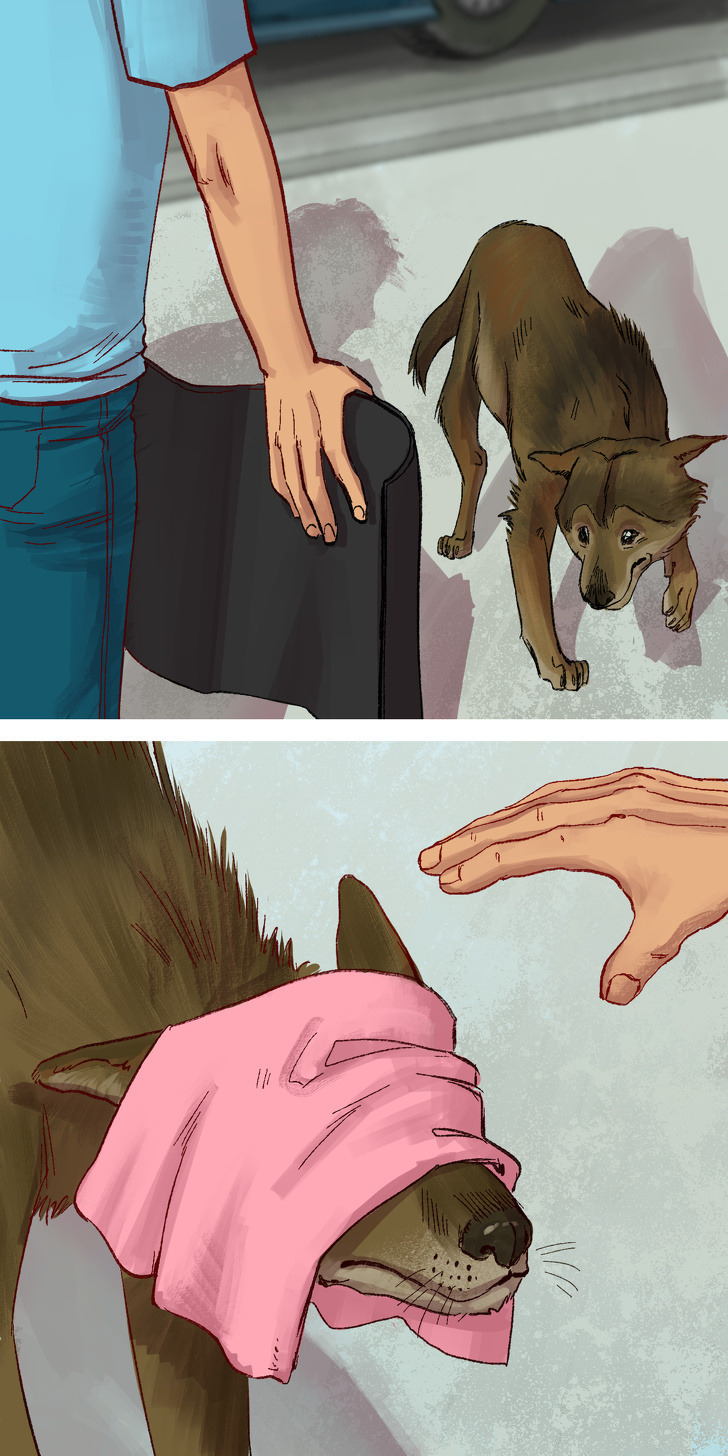
An injured dog is probably frightened and in pain, and it might even bite you if you try to approach it, especially if it’s a stray dog. So try to be cautious when rescuing them:
- Approach the dog slowly, without making direct eye contact, and while talking in a soothing tone.
- Put a barrier between yourself and the dog. For example, you can use a trunk cover.
- If you feel like the dog is behaving a bit aggressively, it might be appropriate to use a muzzle to make yourself safer. But only if the dog is breathing fine, not vomiting, and there’s no bleeding from the mouth. If you don’t have a muzzle, you can try to make one yourself.
- Another thing that can help calm the dog down is to put a towel over their head.
- Check for signs of injury and administer first aid only if you know how to do it correctly. If the dog is bleeding, apply pressure to the wound.
- When you transport an injured dog, give them as much stability as possible to avoid making the situation worse. So put them on a flat surface or use a strong towel or a blanket as a stretcher.
4. Hedgehog
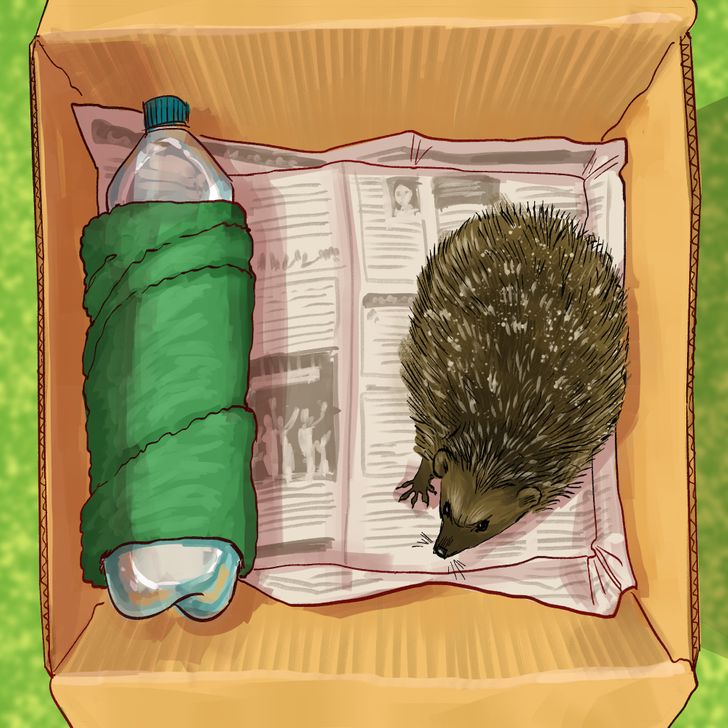
If you see a hedgehog staggering around in the winter or during the day, it might be a sign of hypothermia, and the hedgehog needs your help.
- Wear gloves or use a towel to capture the hedgehog in order to avoid injuring yourself.
- Put a towel or a scrunched-up newspaper in a cardboard box, and then put the hedgehog in this box.
- Fill a water bottle with hot water, wrap it in a towel, and place it inside the box.
- Once you’ve done all that, contact a rescue center.
5. Rabbit
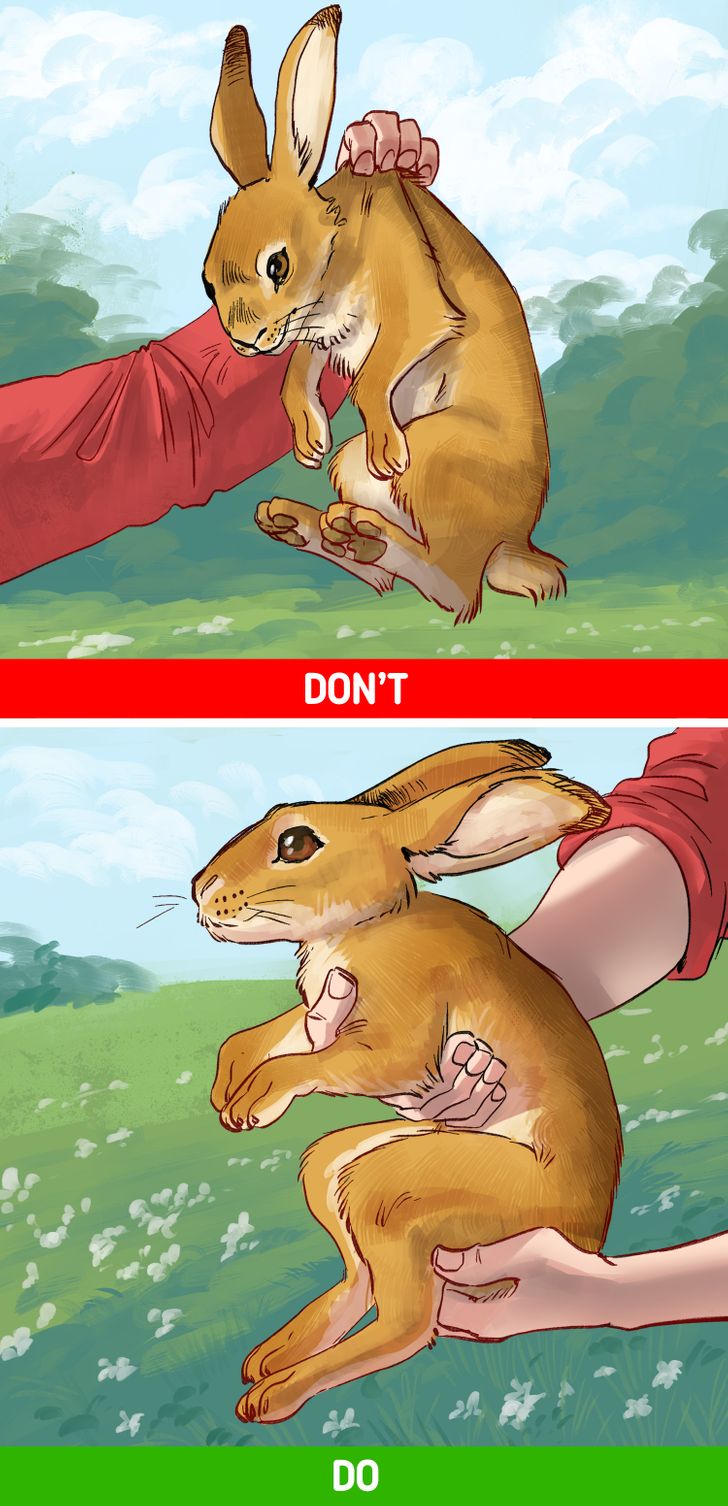
If you’ve stumbled upon a nest of bunnies and the mother is nowhere to be seen, it doesn’t necessarily mean they’re orphaned.
- Wait until it’s dark for her to return, because she usually comes to nurse her babies at night. If she doesn’t come, you might need to bring the babies to a rescue center.
- If you’ve found bunnies far from their nest, try to locate the nest and bring them back.
- In case you come across an injured rabbit, bring it to a rehabilitation center. Be careful and wear protective gloves.
- Make sure to handle the rabbit with care. They should never be picked up by the ears, legs, or scruff. Instead, use both hands, with one hand supporting the chest and the other one under their bottom.
- Transport them in a cardboard box with some soft cloth on the bottom.
6. Turtle
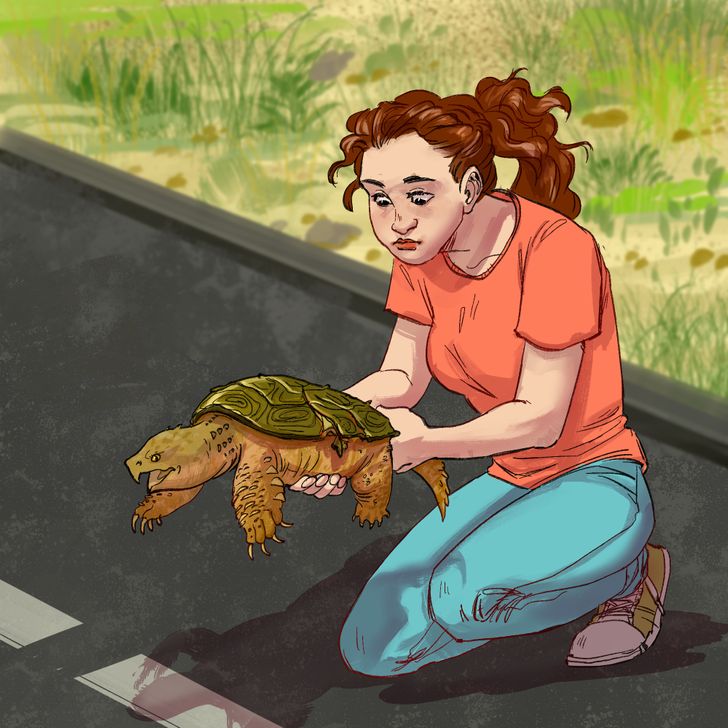
Turtles sometimes fracture their shells or limbs when crossing roads, so they might be in need of your help.
- Usually, turtles can be safely picked up with 2 hands at the back of their shell. However, snapping turtles might feel threatened, if your hands are near their head, and injure you. So it’s better to use a shovel or a car mat to pick them up.
- You can also grab the base of the tail, slide your hand underneath, and lift the turtle up that way.
- Put the turtle in a container with a moist towel on the bottom.
- Don’t give it any food or water, try to be quiet, and avoid touching it unnecessarily.
7. Squirrel
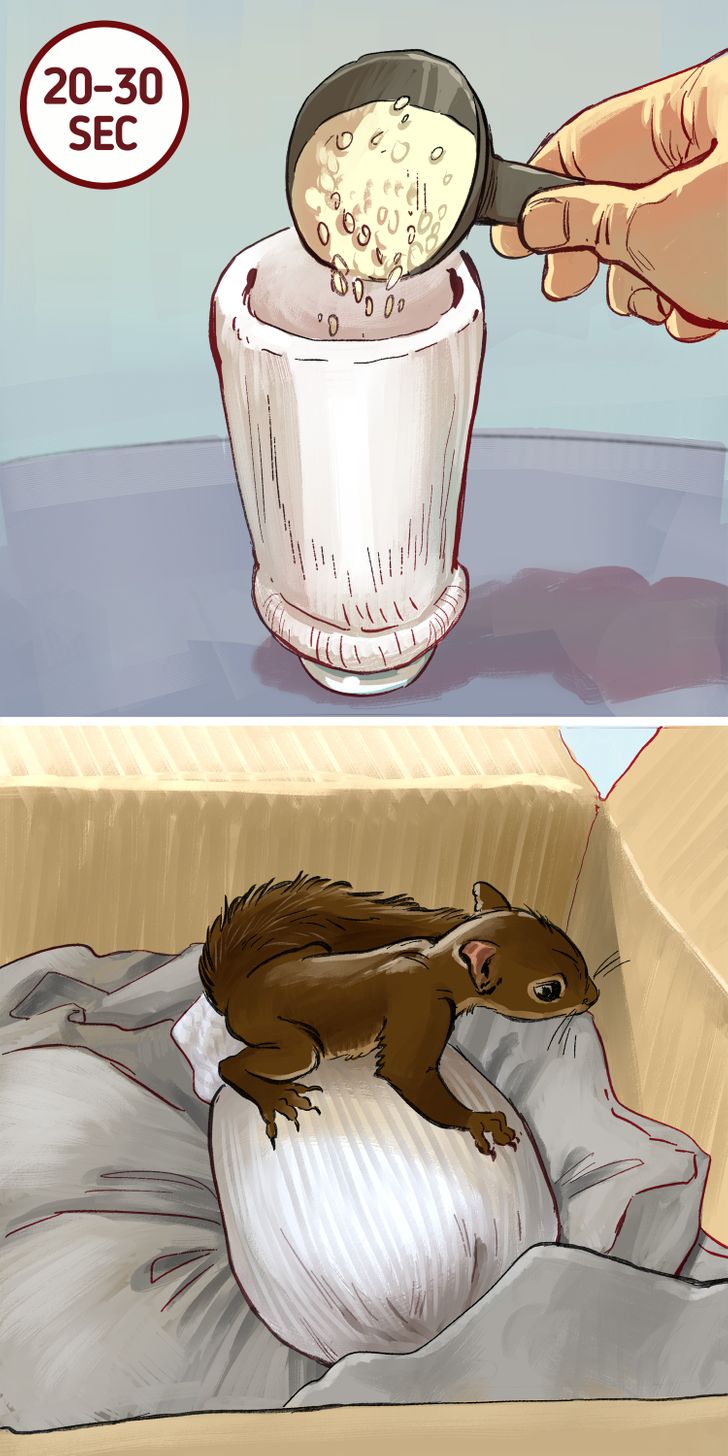
If you’ve found a juvenile or adult squirrel that’s not injured, leave it alone. However, if it’s an infant squirrel who’s smaller than 6 inches long, not including the tail, and whose tail isn’t fluffed out yet, it might need your help getting back to its mother.
- Put uncooked rice in a sock and microwave it for 20-30 seconds. Wrap a towel around this sock and place it in a container that has air holes and some cloth on the bottom. You can also use a heating pad to keep the container warm.
- Put the baby squirrel in the container, and don’t forget to wear gloves for your protection.
- Place the container near a tree close to where you found the squirrel. Or, if you know where the nest is, place it near that tree.
- Attach the container to the tree and if the squirrel’s eyes are open, place them on the trunk to encourage them to climb.
- If the squirrel you’ve found is injured, place them in a container and contact wildlife rehabilitators. Cover the top of the container with something to create a dark space, and try to be quiet. This will help them feel calmer.
- Don’t give food or water to the squirrel.
Have you ever saved an injured animal? Did you follow the steps we mentioned? Do you know other important tips?
Comments
last winter we found a hedgehog, he was very scared and we didn't really know how to help him..
ohhh.... was it injured?
I don't think so. I didn't look at him so much but I remember he was running around and made funny noises
once we also found a hedgehog near my gran's house. We were feeding him with milk. He was happy I guess but ran away soon after
he tried to give him something to eat too, but by the time we came back, it left
Related Reads
15 People Who Found Peace After Life’s Biggest Setbacks

My Mom Lied to Me About My Real Father, and After I Found Out the Truth, My Life Turned Into a Nightmare

I Refused to Share My Inheritance With My Mom—But a Family Secret Left Me Confused

I Refused to Watch My Daughter’s Kids When She Had a Medical Emergency
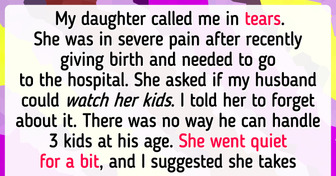
17 Families Whose Mornings Start With a Good Dose of Humor

17 People Revealed What Became the Last Straw in Their Relationship

My Stepdaughter Sabotaged My Marriage, but I Got My Sweet Revenge

14 People Who Have Scratched the Word "Shame" Out of Their Dictionary

I Kicked All My Bridesmaids Out of My Wedding and I Don’t Want to See Them Ever Again

15+ Stories That Prove Moms’ Love Tank Never Runs Empty

My Son Called It a Family Trip Until I Found Out the Real Reason I Was Invited

Lizzo Flaunts Major Transformation, but Fans Are Worried
